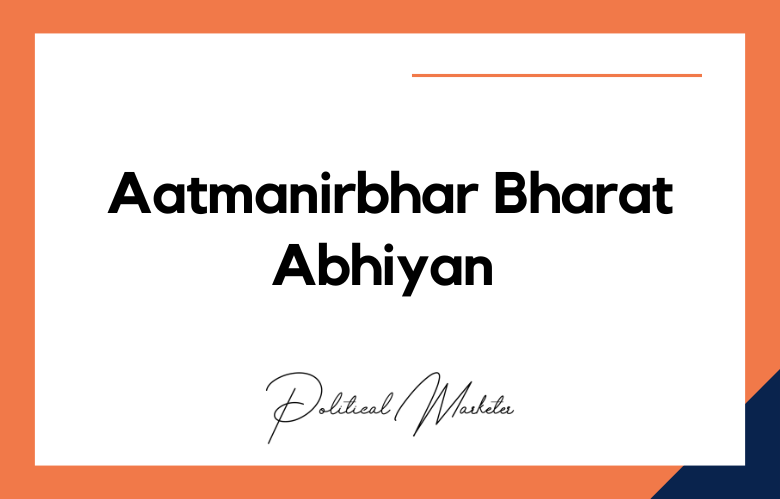In today’s digital age, the media plays a significant role in shaping political perceptions. Political leaders on both the local and global stage must effectively communicate their message while navigating potential pitfalls that could derail their careers.
Essential media training is necessary to help political leaders succeed in today’s media landscape.
The Importance of Essential Media Training for Political Leaders
Politics and media have always had a close relationship, but it is safe to say that in today’s world, media plays an even more prominent role in political landscapes.
Cameras are everywhere, and news travels fast, which means that every action and word of political leaders is under scrutiny. In light of this, political leaders must receive adequate media training.
Effectively and confidently communicating in front of the camera is critical to political leadership. Politicians risk damaging their reputations without media training with ill-timed comments and poorly executed speeches.
Making the Most of Media Appearances: Essential Media Training for Political Leaders
In today’s world, the media plays a pivotal role in shaping public opinion and perceptions of various issues and personalities. As a political leader, you must communicate your ideas, goals, and policies effectively to the public through different media channels.
However, navigating the media landscape can be daunting, especially if you lack the necessary skills and training. We will explore the essential media training you need as a political leader to make the most of media appearances and communicate your message effectively.
Becoming a Successful Political Leader: Essential Media Training
In today’s fast-paced, media-driven world, political leaders must handle themselves effectively in front of cameras and reporters. From debates to press conferences to interviews, the media is a constant presence in the lives of politicians.
As a result, media training has become an essential part of the preparation process for anyone pursuing a career in politics. We will look closer at the importance of media training for political leaders and provide some tips on becoming a more effective communicator.
Understanding The Media:
One of the first things politicians must understand is the role of the media in the political sphere. The media acts as a mediator between the people and the government, and it is a powerful tool to convey political messages.
A media-trained politician should know the different media types and understand how each works. This will help them to tailor their messages to different audiences and communicate their ideas more effectively.
Mastering Body Language:
Politicians should know that non-verbal cues can be as powerful as spoken words when communicating with the media. As such, mastering body language is crucial in conveying one’s message and appearing trustworthy in front of the camera.
Media-trained politicians should know their posture, tone of voice, hand gestures, and other non-verbal cues that convey confidence and authority.
Crafting Effective Messages:
Political leaders are often required to communicate complex ideas and policies to the public. Crafting clear and concise messages that resonate with the public requires practice and skill.
A media-trained politician should know how to structure their messages, highlight key points, and communicate their ideas in a way that is easy to understand.
Handling Difficult Questions:
The media landscape can be challenging, and political leaders must be prepared to face tough questions. A media-trained politician should know how to handle these questions skillfully and use them as an opportunity to reinforce their message.
They should also be aware of techniques like bridging and reframing, which can help them navigate tough questions and communicate their ideas effectively.
Crisis Management:
In the world of politics, crises are not uncommon. Media-trained politicians should be prepared for any potential crisis and know how to communicate in a way that reassures the public.
Crisis management training can teach politicians how to remain calm under pressure, control the message, and respond to media inquiries in a way that helps maintain their credibility.
Refine Message Delivery
One of the most critical components of media training is refining message delivery. With media training, political leaders can learn how to communicate their message clearly and effectively while tailoring it to specific audiences.
By refining message delivery, political leaders are better equipped to communicate key policy positions, respond to media queries, and communicate their message in a way that resonates with voters.
Crisis Management
Media training is also essential for crisis management situations. In today’s fast-moving news cycle, a crisis can quickly unfold, and a political leader must know how to respond.
Through media training, leaders can learn how to quickly and effectively manage crises and communicate transparently and authentically. This type of training can be invaluable when faced with unexpected or unfavorable headlines.
Building Rapport with the Media
Building relationships with the media can be vital for political leaders. With media training, leaders can learn how to build rapport with the media while providing a clear message.
When leaders have a healthy relationship with media members, they can better control the direction of news coverage while ensuring that the right people hear their message.
Effective Body Language and Speaking Techniques
Media training helps leaders refine message delivery and improves their body language and speaking techniques.
A political leader can communicate confidence effectively, while poor body language can convey anxiety. Speaking techniques, such as proper vocal tone and pitch, can also help amplify a leader’s message.
Handling Tough Questions
Handling tough questions from the media can be daunting for political leaders. Media training can help leaders prepare for complex lines of questioning while providing techniques for staying on message.
Handling tough questions effectively and authentically is critical to building trust with voters.
Conclusion:
In today’s media-focused political landscape, essential media training for political leaders is more critical than ever.
By refining message delivery, enhancing crisis management skills, building rapport with the media, improving body language, and developing effective speaking techniques, leaders can effectively communicate their message and navigate the pitfalls of modern media.
Ultimately, media training can help political leaders build trust with voters, gain positive news coverage, and achieve their policy objectives.
Call: +91 9848321284
Email: [email protected]
Frequently Asked Questions (FAQs)
1. What is media training for political leaders?
Media training equips politicians with the skills and techniques to effectively communicate their messages across various media platforms during interviews, debates, or public appearances.
2. Why is media training important in politics?
It helps leaders manage public perception, respond to tough questions, avoid gaffes, and stay on message under pressure.
3. What skills are taught in media training?
Core skills include message framing, body language, voice modulation, bridging techniques, interview tactics, and managing hostile or tricky questions.
4. How does media training improve political communication?
It sharpens delivery, enhances credibility, teaches control over interviews, and helps leaders emotionally connect with audiences.
5. What is message discipline and why does it matter?
Message discipline is the ability to stay focused on key talking points. It ensures clarity, consistency, and effectiveness in communication.
6. Can media training help in handling crises?
Yes. It prepares leaders to deliver calm, clear, and confident responses during scandals, controversies, or emergencies.
7. What is the role of body language in media appearances?
Non-verbal cues like eye contact, posture, hand gestures, and facial expressions significantly affect audience perception and trust.
8. How can political leaders avoid media traps?
Training teaches how to recognize baited questions, pivot to core messages, and avoid saying something off-message or controversial.
9. Do politicians need different strategies for different media?
Absolutely. Strategies differ for live TV, podcasts, social media interviews, print media, and hostile or friendly outlets.
10. What is the bridging technique in media interviews?
It’s a method where the speaker acknowledges a question and redirects it to their key message, helping control the narrative.
11. Can media training help with debate performance?
Yes. It enhances confidence, clarity, timing, and rebuttal strategy—crucial for televised debates and public forums.
12. How does voice training fit into media preparation?
Voice modulation, pacing, tone, and clarity are taught to improve delivery and ensure the message is both engaging and authoritative.
13. What should political leaders wear during media appearances?
Media training includes wardrobe and grooming tips to maintain professionalism and avoid distractions during video interviews or live coverage.
14. Is media training only for top leaders?
No. Spokespersons, regional leaders, youth leaders, and even backbenchers benefit from learning how to manage the press and public communication.
15. Can media training help rebuild a damaged reputation?
It aids in reputation recovery by teaching controlled communication, narrative resets, and strategic public re-engagement.
16. How often should leaders undergo media training?
Regular refreshers are essential—especially before major campaigns, interviews, or during evolving political landscapes.
17. Can media training be customized for regional leaders?
Yes. It can be tailored for local languages, cultural nuances, and region-specific media challenges.
18. How is mock interview practice useful in media training?
It simulates real scenarios, builds muscle memory, and prepares leaders for high-pressure questions and unexpected turns.
19. What role does empathy play in media communication?
Empathetic communication helps leaders connect emotionally with citizens, especially in times of grief, crises, or major policy shifts.
20. What is the future of media training in politics?
Expect greater integration of AI feedback tools, virtual reality simulations, deepfake counter-preparation, and omnichannel media strategies.










